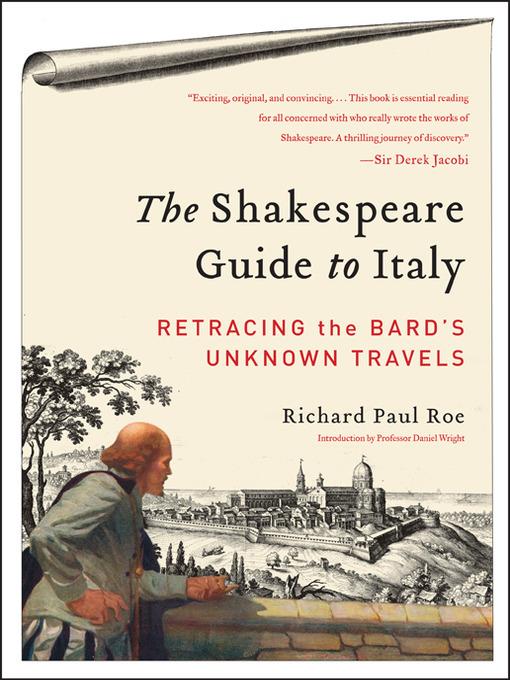
The Shakespeare Guide to Italy
Then and Now
کتاب های مرتبط
- اطلاعات
- نقد و بررسی
- دیدگاه کاربران
نقد و بررسی

June 27, 2011
This Baedeker to the "Italian plays," an eccentric labor of love by an attorney who works like crazy to find hidden truths via minute analyses of texts, has at its core the long-accepted scholarly belief that Shakespeare never traveled, certainly not extensively, through Continental Europe and Italy. From here, the book veers into murkier territory. For Roe (who died last year), it is the earl of Oxford who made all the trips, accounting for details and an intimate erudition regarding the Mediterranean setting of 10 of the plays attributed to Shakespeare. Thus, many of the so-called topographic blunders claimed by scholars in The Two Gentlemen of Verona are resolved through a better understanding of a long-vanished canal system; Romeo and Juliet details aspects of settings (types of trees, Juliet's window, and other facts) that come from no surviving source that a nontraveler could have accessed; Prospero's island in The Tempest is positively identified by geologic configurations as the island of Vulcano off Sicily's northeastern shore. Overall, the title is misleading: Shakespeare of Stratford turns out to be no guide at all. Considerable learning and ingenuity in working through the details of location and character are offset by an odd delusion, which, in fairness, the author shares with many serious fans, that the Bard was not Shakespeare of Stratford, though Roe only slyly implies this belief. 180 color and b&w photos; maps.

Starred review from August 1, 2011
For this literary journey through Shakespeare's ten plays set in Italy, Roe, an English and history scholar and an attorney who died in 2010, explored the places that inspired many of Shakespeare's classics and presents a solid argument that Shakespeare was well traveled. Roe spent over 20 years traveling throughout Italy with Shakespeare plays in hand. The thrill of discovery he felt throughout his quest leaps off the page and makes for an accessible read. The connections he draws among the plays and locales are backed up with pictures, maps, literary references, and well-documented arguments. Particularly striking is Roe's argument that A Midsummer Night's Dream is not set in Greece, as traditionally accepted, but in a small town in Italy. VERDICT A fascinating look at a largely untouched aspect of Shakespeare's identity and influences. Recommended for Shakespeare enthusiasts and scholars as well as travelers looking for a new perspective, this is also particularly intriguing as a companion to specific plays.--Katie Lawrence, Chicago
Copyright 2011 Library Journal, LLC Used with permission.

September 15, 2011
The Italy of Shakespeare's plays has been said to be purely imaginary. After all, in them people sail to landlocked Verona, Milan, Padua, and Florence, and seemingly walk to Spain and back overnight. Roe couldn't believe the playwright was such a geographic nincompoop. He exhaustively covered the Italian-set plays' grounds, using the earliest versions of their wordings as directions, and found them quite correct, after all. Italians did boat between inland cities, thanks to an abundance of canals, and Florentines had a house of St. Iago within the city walls, so why hoof it to Compostela? Besides verifying that the playwright knew his Italywith many photographs of still-extant structures as well as textRoe clarifies scene-setting wording in dialogue and stage directions and argues convincingly for A Midsummer Night's Dream as an Italian play despite its stated location in and around Athens. Less persuasive is Roe's insistence that the dramatist must have visited Italy. An exceptionally entertaining, enlightening, and handsome companion for a thrillingly literate Italian sojourn, in any event.(Reprinted with permission of Booklist, copyright 2011, American Library Association.)

























دیدگاه کاربران